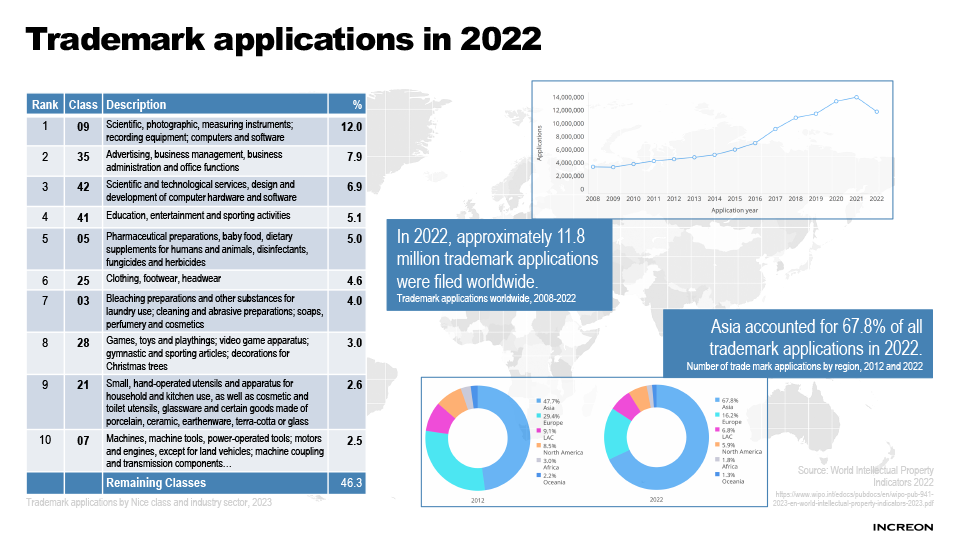Trademark law
It has been a long time since only capital assets and accounts receivable have been important criteria for valuating companies in the economic society we live in today. Trademarks can achieve an immense immaterial value; thus, become factors determining the value of a company.


TRADEMARK RIGHTS AND TRADEMARK LAW.
Nationally and internationally protected.
Market position, in particular, is an important criterium. As a general rule, market position is all the higher the more the company or the brand (trademark) is known in the business world. Against this backdrop, the law concerning identification marks and enforcing these laws plays an ever increasing role. One can find the proof of this in the continually increasing number of registrations of trademark rights at trademark offices. This also has an effect on naming at the naming agency.
National and international trademark law
German trademark law is, like all other national trademark law, influenced by international and supranational legal norms. The most well-known is surely the Madrid Agreement (Madrid Agreement Concerning the International Registration of Marks) from 1891. It is a very old agreement that gives countries which are parties to the agreement the facility to protect nationally registered trademarks in another country. National trademarks can thus become internationally registered trademarks (IR, or international registration).
Trademark law is identification law, stipulating what can be protected as a trademark. Word marks and combinations of letters and numbers (figures) may be protected, along with figurative marks and combined word marks and figurative marks. Trademark protection can be obtained for color marks, sound marks, claims, advertising slogans, three-dimensional marks, and work titles. Indications of geographic origin, on the other hand, may not be protected as an individual right.
Grounds for refusal of trademark registration
In principle, anyone can be the owner of trademark rights, including natural persons, legal entities, or partnerships.
Trademark rights cannot arise when absolute obstacles to protection or registration exist. The absence of a distinctive character is, for example, such an obstacle. A concrete need to keep the mark free for the trade can also hinder a registration, because no participant in economic transactions may monopolize a general designation for his or her own use. After submission and during the period of opposition (time period for filing an objection), trademark owners with an older priority may block the registration owing to the likelihood of confusion in order to protect their own trademarks, when it concerns the same types of goods or services. This can also occur after the successful registration of a trademark. Therefore, thorough trademark research during the phase of naming at the naming agency is very important.
Acquire trademark rights, actively use the trademark
It is not even necessary to have a going concern to obtain the right to a trademark. What is important in this regard is only the priority principle. In the case of a conflict, the one who possesses the trademark right is the one who obtained it first. In the case of a registered mark in the trademark register of a country, this can be determined free of doubt through the date of registration and the later entry. The right to a trademark can be registered for the period of time of ten years from the point in time of the registration and then be renewed again and again every ten years. Use is associated with the trademark right. If the trademark is demonstrably unused for five years, someone else can lay claim to it.
Besides the national trademarks, for member states of the European Union (EU), there is the European Community Trade Mark, which is valid uniformly. The central application and registration process makes registering trademarks simpler and more cost-effective; at the same time, the Community Trade Mark grants an absolute right uniformly within the EU which arises from European legal arguments and is valid European-wide.
Madrid Trademark Agreement
International trademark law, or the IR mark, is based on two agreements: As mentioned above, one is the Madrid Agreement from 1891 in the Stockholm version of 1967, and the other is the Protocol Relating to the Madrid Agreement from 1989. When a trademark is registered in a so-called party to the protocol, a trademark right can be obtained through an international trademark registration in the respective target member country. The IR mark is, however, not independent trademark law or an independent trademark right; rather, it is the sum of national trademark law and trademark rights.








